We’ve been covering the key reactions and mechanisms of aldehydes and ketones, how they react with water to form hydrates, with alcohols to give hemiacetals and acetals, with amines to form imines and enamines, and with Grignard and other nucleophiles to build new carbon–carbon bonds. This post brings it all together with a focused set of practice problems to test your understanding of these transformations. Whether you’re reviewing for an exam or reinforcing the reaction patterns, this is a great way to apply what you’ve learned and build real mastery.
CS Members, don’t forget to download your Study Guide and Reaction Maps of Aldehydes and Ketones for a clear visual overview of the mechanisms, reagents, and products, organized to help you see the big picture and make connections faster.
Reactions of Aldehydes and Ketones
📥 Download this Study Guide of Carboxylic Acid Derivatives and others here.
This content is for registered users only.
By joining Chemistry Steps, you will gain instant access to the answers and solutions for all the Practice Problems, including over 40 hours of problem-solving videos, Multiple-Choice Quizzes, Puzzles, Reaction Maps, and the powerful set of Organic Chemistry 1 and 2 Summary Study Guides.
🗺️ All the Conversions of Aldehydes and Ketones in Two Comprehensive Reaction Maps


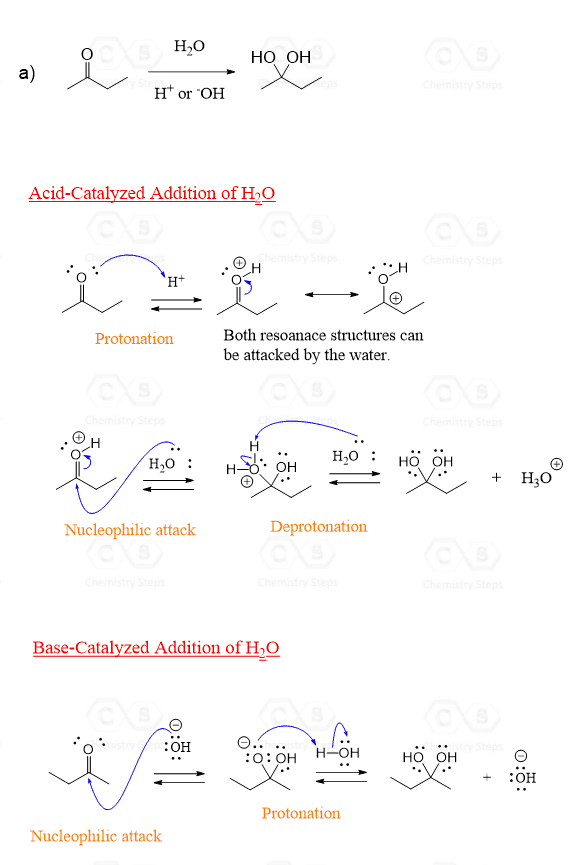
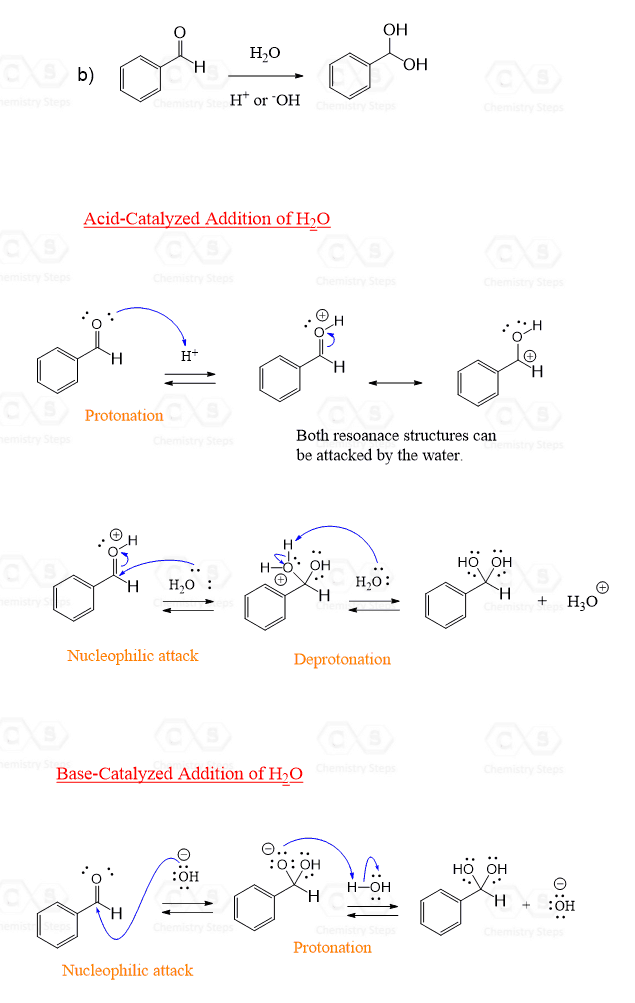
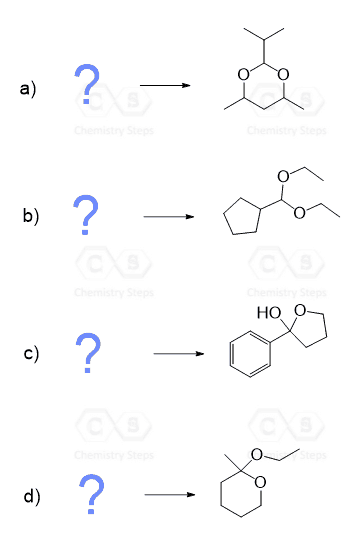

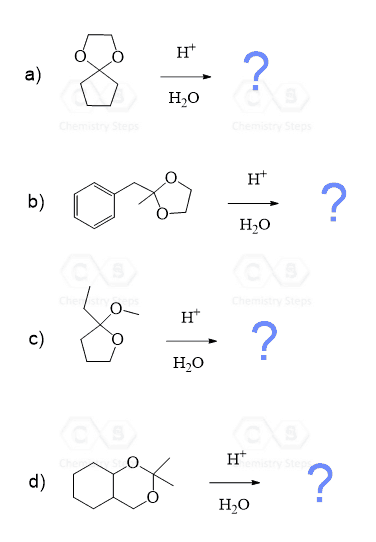

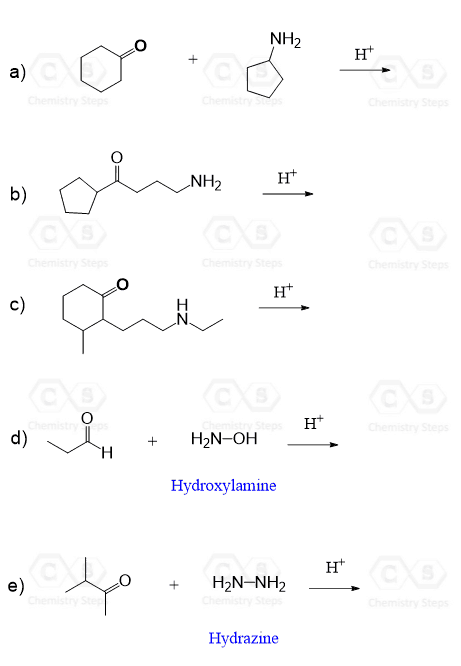

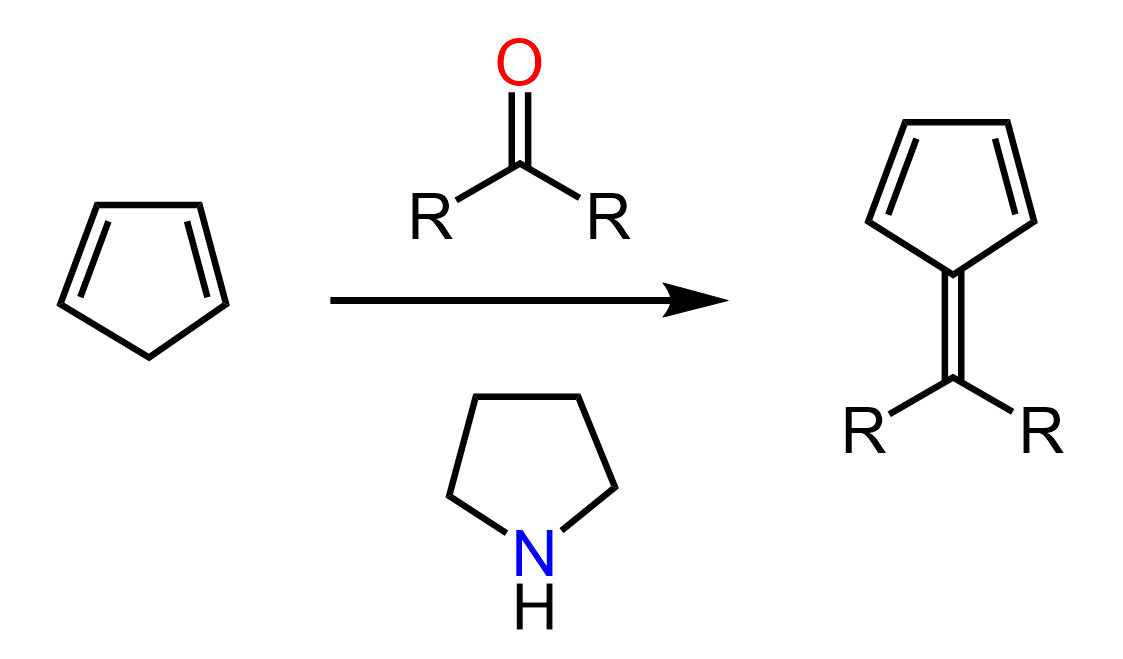
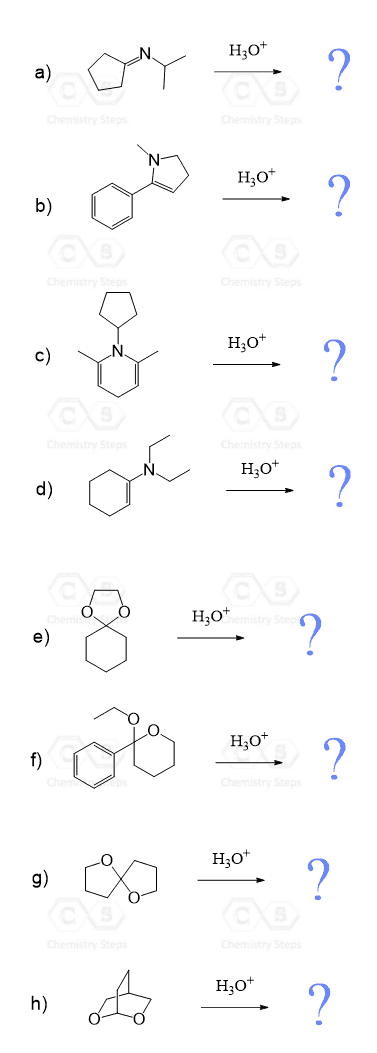

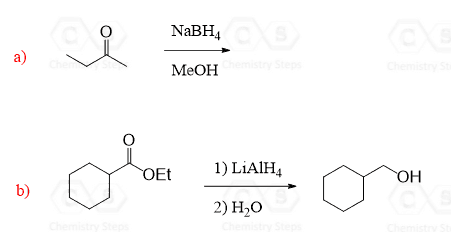
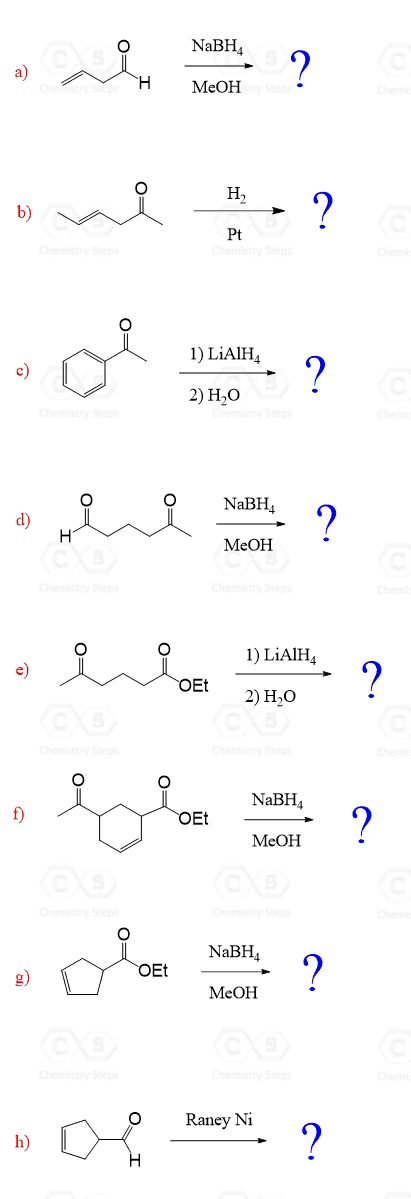







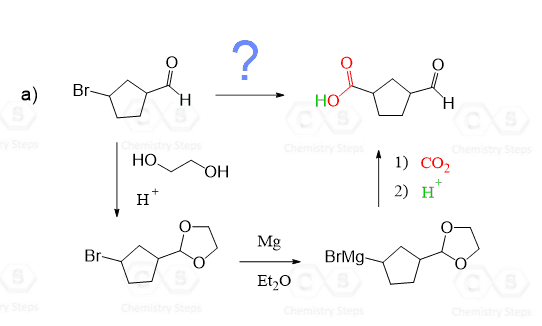
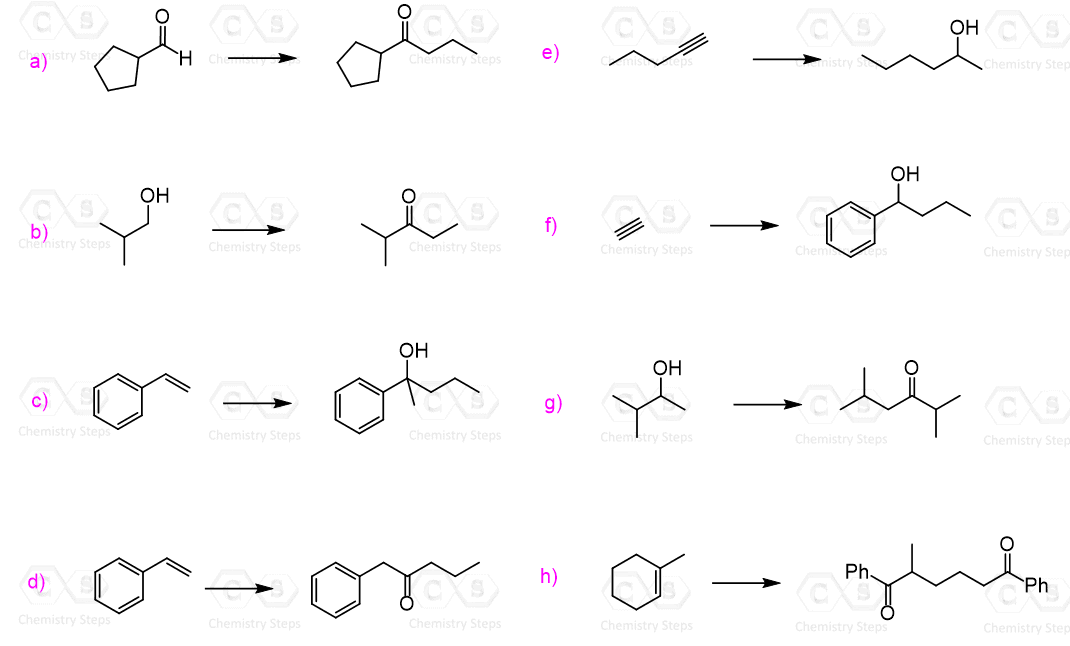
 The product has three more carbons than the starting aldehyde. Therefore, you need to think of making new C-C bonds to extend the carbon chain. So far, you have probably covered only two reactions that allow making new carbon-carbon bonds: the
The product has three more carbons than the starting aldehyde. Therefore, you need to think of making new C-C bonds to extend the carbon chain. So far, you have probably covered only two reactions that allow making new carbon-carbon bonds: the 


